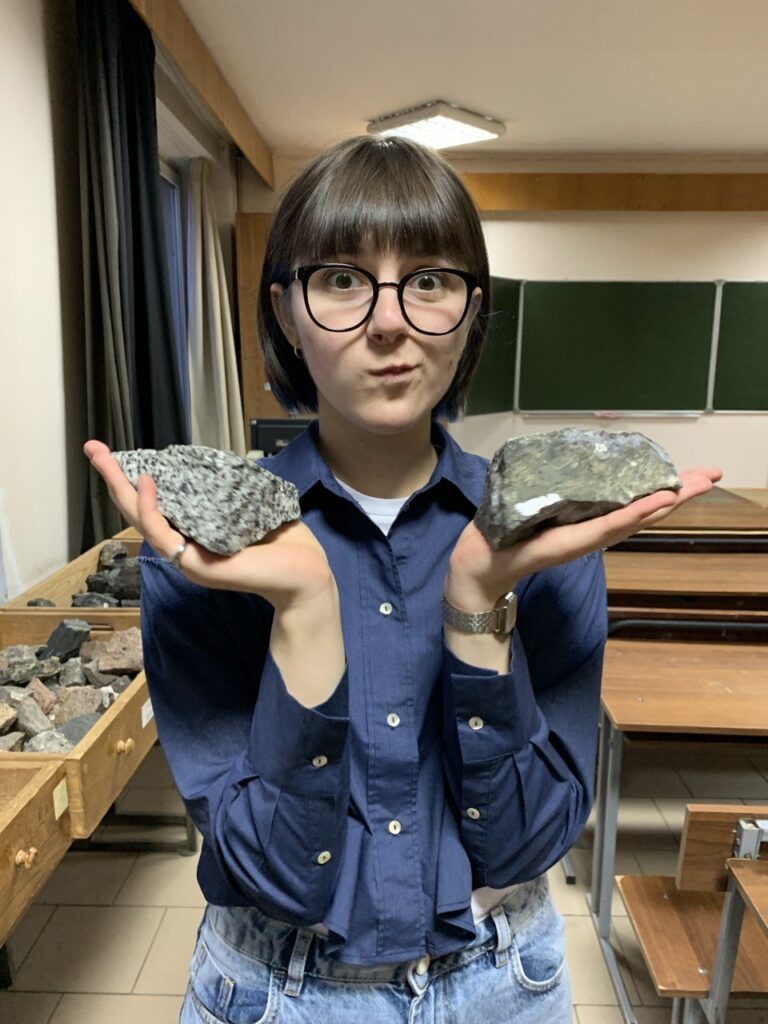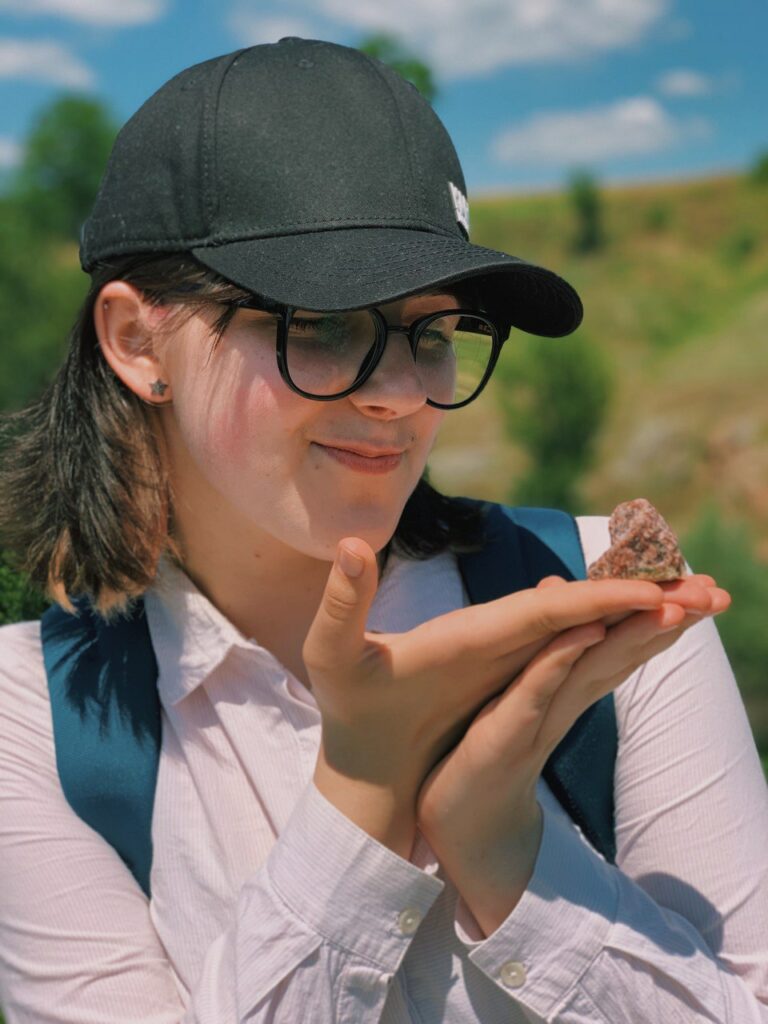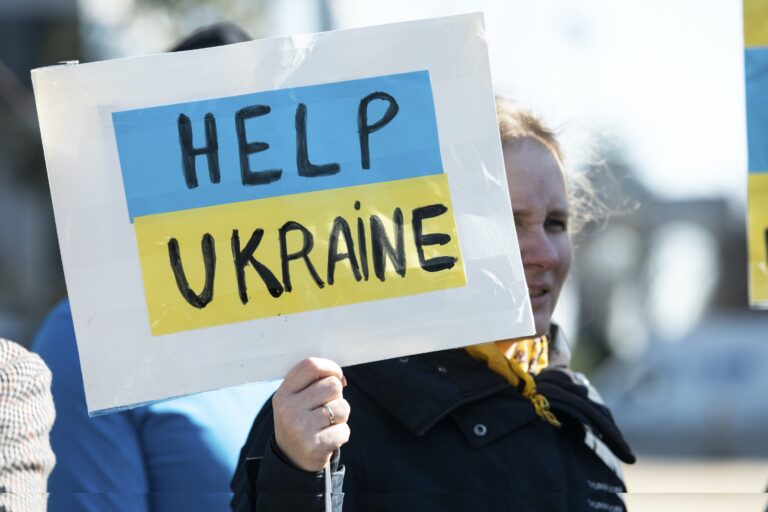
Unravelling the secrets of minerals
Mariia Yakovenko has recently turned 20 and she is a geology student and young scientist from Bila Tserkva, Ukraine. She conducted her first research in high school and has already won numerous national and international competitions. Currently, she studies big data in geology and craves to enhance her skills in geophysics. Besides, Mariia is interested in design and SMM – so she is definitely a bright and versatile person!
Mariia’s ‘STEM Story’ is one of a series of interviews with promising female professionals in science and technology, who want to share their experiences and motivate young girls to choose a STEM career.

1. Could you please tell us more about your major – what do you study? What is your greatest achievement so far?
I study a rather non-typical discipline, even among the natural sciences – geology. I started my studies in this field at Kyiv National University of Taras Shevchenko, but due to the full-scale invasion, I also started studying at Adam Mickiewicz University in Poznan, Poland. At both universities, I am currently a 3rd-year student.
I became interested in geology in the 9th grade, writing scientific papers at the Junior Academy of Sciences of Ukraine, where I twice won first place on the national stage of the competition. Last year, as part of the Ukrainian team, I also participated and won gold and silver medals in international competitions in Poland (E-NNOVATE) and Tunisia (I-FEST), where I talked about the alluvial deposits of the Ros River and the problems currently being faced with these deposits. The research work characterises alluvial deposits of the Ros River and their lithological and mineralogical composition within the Bila Tserkva agglomeration.
The purpose of this research was to establish the material composition and ecological characteristics of the formation of alluvial deposits of the Ros River within the Bila Tserkva agglomeration. These deposits play an important role in water quality. They are a complex source of polygenic mineral raw materials. The research rationale lies in the fact that I have revealed the influence of natural and man-made factors on the formation of river deposits, as well as determined the mineral composition and content of impurity elements in the alluvial deposits of the Ros River valley. Also, while working on this project, I collected and processed archive materials, scientific publications on the geology and hydrology of the area, and studied river deposits. Based on field and laboratory research methods, we studied the features of the lithological and mineral composition of alluvium of the Ros River, and carried out a granulometric analysis of sediments.
Ultimately, this research aims to ensure the rational development and efficient use of natural resources, reduce the negative impact on the environment of harmful substances, and ensure the transition to a rational model of consumption and production.
This particular research project was one of those that had the greatest impact on my future research interests and started me on my way to serious science.
I also have about 10 publications in scientific journals, including one in Scopus, and I am currently the vice president of our student charter of the Society of Exploration Geophysicists (SEG).

2. How and when did you become interested in a career in STEM? Why did you eventually choose this particular field?
The story of my passion for STEM began when I decided to take an advanced maths class back in the 8th grade. Then I became interested in chemistry, could spend hours working on problems, and in my free time I grew crystals and studied their structures.
My interest in geology arose by chance: my teacher suggested that I write a scientific project for a competition in the Junior Academy of Sciences of Ukraine. I thought it would be an interesting opportunity to explore something new and I agreed. The topic came to me quite by accident, because my city is famous for the presence of radon water. So I decided to investigate the problem of the quick change in radon content. I then realised that in the last 60 years, I was the first person to study this problem: nobody had studied the radon content of the Bila Tserkva radon water deposit since 1964.
Three people contributed to my passion for geology. My geography teacher and as a result first supervisor – Tetiana Hryhorivna – was the first person who got me interested in geology and instilled in me a love for it. The second was my professor at my university, Viktor Antonovych: together we conducted a study of alluvial deposits, and this was decisive before I narrowed it down to this field of study. And the last person was a geophysicist from my university, Oleksandr Viktorovych. With him, we are working on SEG projects, and we were also able to assemble an installation for the study of radon content and calculate it again in 2021. This is the person with whom I realised that the geophysical direction in geology is what I want to do in life.
These people greatly influenced my choice of geology and showed me that geology can be multifaceted, interesting, and not as stereotyped as we used to imagine.
3. Have you ever experienced gender inequality or gender-based stereotypes during your studies or career?
Unfortunately, there are stereotypes, because geologists are still seen as bearded men, who spend weeks in the fields looking for rocks. So seeing a girl in this field is very unexpected for some people. In general, we have about 60-70% of boys in geology. The majority of geology professors are men, and if an employer has to choose between a male and a female geologist, they will choose the man in most cases. It is also commonly believed that field research is more suitable for men, and that women in this profession should mainly work in laboratories or interpret and process data.
However, I would like to note that on my way I have met amazing and powerful women in geology, who are really passionate about this branch of science and do such interesting research projects, and most importantly, useful ones.
4. Why is promoting STEM disciplines, particularly among girls, an important priority for the EU and Ukraine?
Science is our future, including the creation and invention of useful and important technologies. Basic science is something that will work and is working for the long term, and in the future, it can give us an explanation for many things that are still unknown, or solve existing global problems.
For example, in geology, we can find ways to solve the fuel crisis, use alternative minerals or materials, help in space exploration of rocks, and detect life or water on other planets. Also, the field of geology will be useful when we start rebuilding our country after the war.
Therefore, geology and STEM are important areas that should be explored and, of course, young people and girls should be encouraged to pursue them.

5. Are there any female scientists who inspire you? Why are they so special?
There are actually quite a few of them, but there are two female scientists from my university who inspire me to work harder and become better in this field. One of them is Professor Olena Ivannik: together with her team, they have been researching geological hazards in Kyiv and the Carpathian region for several years, and it is always very interesting to hear about Olena’s experience and the research they are doing. Her research resulted in the prediction of landslide activity in this region, as well as the development of methods for combating landslides, model building, and the creation of a special program used to determine slope flooding and forecasts.
Other inspiring women geologists include Sofia Kosharna, a hydrogeologist whom I had the opportunity to meet at my university, who became a Fulbright Research and Development Programme 2021-2022 scholar and was able to integrate the latest techniques in calculating the volume of environmental risks associated with hydrogeological and engineering geological aspects. She joined a team of geochemists who conducted field monitoring of water bodies and took part in an expedition to the wilds of Yellowstone.
6. What advice would you give to girls who are considering entering STEM disciplines?
At first, it may seem that geology is definitely not for girls, but this is a misconception, it is very interesting and multidisciplinary. And in fact, despite the stereotypes, many women work in geology and prove that everything is possible. I always say you should never be afraid to start something, try to dispel stereotypes and don’t listen when others say “women have no place in geology” or “a girl will never become a good geologist because men are the priority”, and always remember, who runs the science? That’s right, girls!
More campaign pages:
Interested in the latest news and opportunities?
This website is managed by the EU-funded Regional Communication Programme for the Eastern Neighbourhood ('EU NEIGHBOURS east’), which complements and supports the communication of the Delegations of the European Union in the Eastern partner countries, and works under the guidance of the European Commission’s Directorate-General for Neighbourhood Policy and Enlargement Negotiations, and the European External Action Service. EU NEIGHBOURS east is implemented by a GOPA PACE-led consortium. It is part of the larger Neighbourhood Communication Programme (2020-2024) for the EU's Eastern and Southern Neighbourhood, which also includes 'EU NEIGHBOURS south’ project that runs the EU Neighbours portal.

The information on this site is subject to a Disclaimer and Protection of personal data. © European Union,




